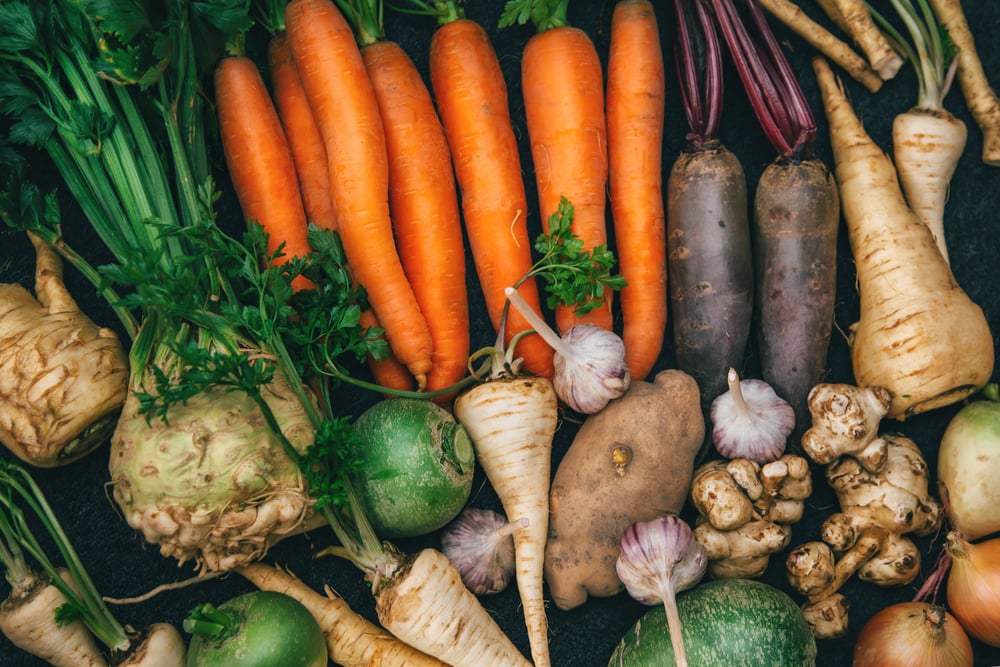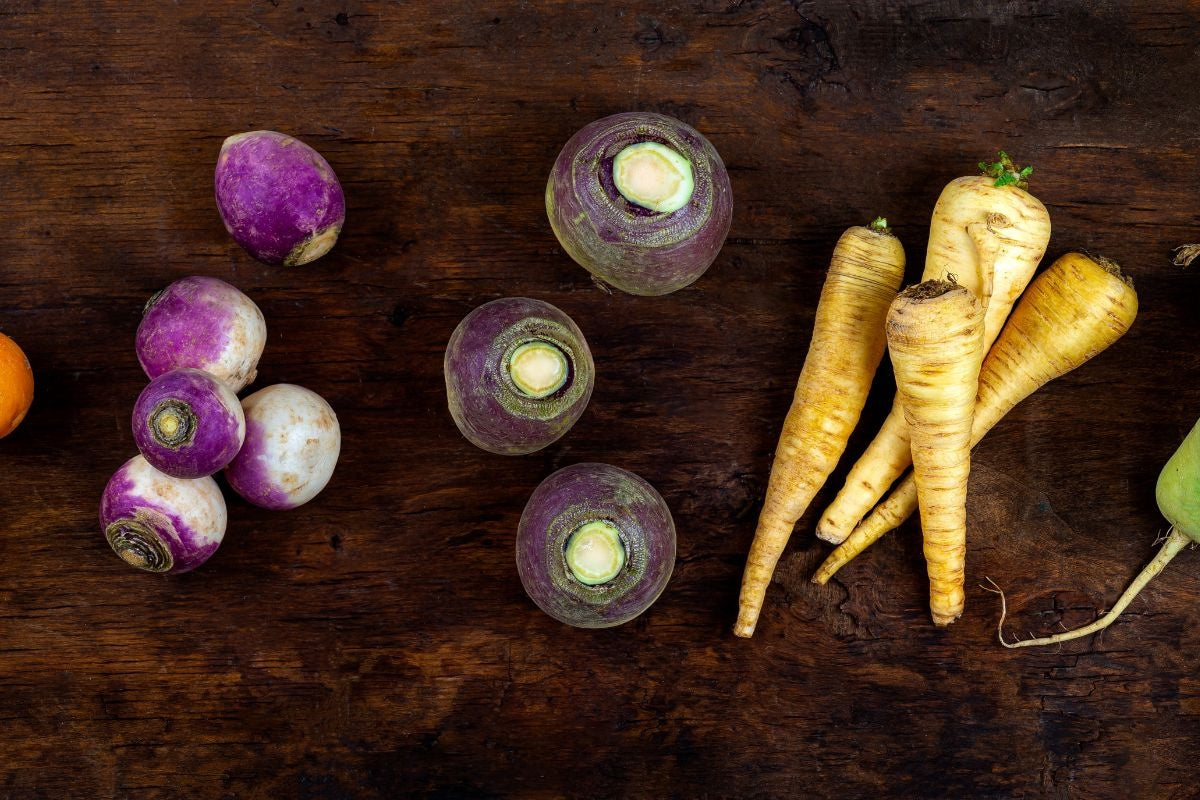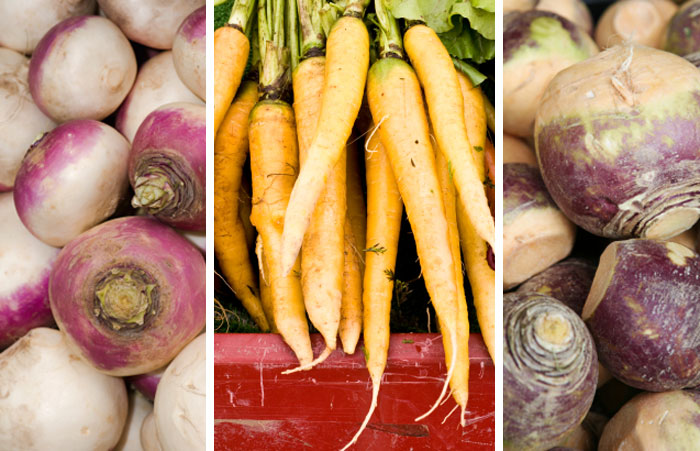In the world of root vegetables, two contenders are often compared: parsnips vs turnips. Both offer culinary versatility and a packed nutritional punch, but which one reigns supreme? This root vegetable rumble will explore the key differences between parsnips and turnips, from their flavor profiles and textures to their culinary uses.
So, buckle up and get ready to discover the champion of the underground garden!

Understanding Parsnips and Turnips
- Appearance: Parsnips resemble cream-colored carrots, while turnips come in various shapes and colors, ranging from white to deep purple.
- Flavor: Parsnips offer a sweet, nutty, and slightly earthy taste that gets even sweeter when cooked. Turnips, on the other hand, have a more complex flavor profile, featuring earthy notes with a hint of bitterness that mellows out with cooking.
Nutritional Powerhouses

Both parsnips and turnips are packed with essential nutrients that contribute to a healthy lifestyle:
- Parsnips: They are a great source of dietary fiber for healthy digestion and weight management. They’re also rich in vitamin K, which plays a vital role in blood clotting and bone health.
- Turnips: These root vegetables are loaded with vitamin C, a powerful antioxidant that strengthens the immune system and promotes collagen production for healthy skin. Additionally, turnips are a good source of potassium, which helps regulate blood pressure.
Culinary Delights
The versatility of parsnips and turnips shines in the kitchen:
- Parsnips: Roasting or sautéing brings out their natural sweetness, making them perfect for soups, stews, and roasted vegetable dishes. They can also be mashed for a creamy and flavorful side dish.
- Turnips: Enjoy their crisp, refreshing taste by incorporating them raw into salads. Alternatively, roast, mash, or stir-fry them for a milder, slightly peppery flavor.
Making the Most of Parsnips and Turnips
Here are some tips to get the most out of these nutritious vegetables:
- Variety is key! Experiment with different cooking methods to discover the full range of flavors each vegetable offers.
- Combine them with other ingredients! Pair parsnips and turnips with other vegetables, proteins, or whole grains to create well-balanced meals.
- Portion control and balance are important! While these root vegetables are nutritious, incorporate them as part of a diverse diet for optimal health benefits.
In Conclusion
Parsnips and turnips are delightful root vegetables that offer a unique blend of flavor, versatility, and health benefits. With this guide, you’re now equipped to explore their culinary possibilities and incorporate them into your diet for a more enjoyable and nutritious journey!
References:
FAQ About Root Vegetable Rumble: Parsnips Vs. Turnips
Q: What are the main differences between parsnips and turnips?
A: Parsnips are sweeter and have a nuttier flavor than turnips, which are more peppery and slightly bitter. In terms of appearance, parsnips are usually longer and slimmer, while turnips are rounder.
Q: How do you cook parsnips and turnips?
A: Parsnips are often roasted, sautéed, or mashed, while turnips can be boiled, roasted, or used in stews and soups. Both vegetables can also be enjoyed raw in salads or salads.
Q: Are parsnips or turnips healthier?
A: Both parsnips and turnips are nutritious root vegetables. Parsnips are a good source of fiber, vitamin C, and potassium, while turnips are rich in vitamin C, calcium, and antioxidants. It ultimately depends on individual dietary needs and preferences.
Q: Can parsnips and turnips be used interchangeably in recipes?
A: While parsnips and turnips have distinct flavors, they can be substituted for each other in many recipes. Just keep in mind that the taste and texture may vary slightly, so adjust seasoning accordingly.
Q: How should parsnips and turnips be stored?
A: Parsnips and turnips should be stored in a cool, dark place or in the refrigerator. To maintain freshness, store them unwashed in a perforated plastic bag. For the best flavor, use them within a week or two.

The Finer Diner has a rich history deeply rooted in the Mt. Oliver and Hilltop community. Our journey began with a simple yet ambitious vision – to create a welcoming space where friends and families could come together to enjoy delicious, comforting meals in a classic diner-style setting. Since our establishment, we have been dedicated to serving food, creating lasting memories, and fostering a sense of belonging within our community. Our commitment to quality, authenticity, and exceptional service has been the cornerstone of our success.
